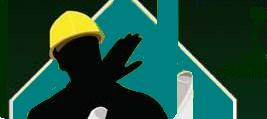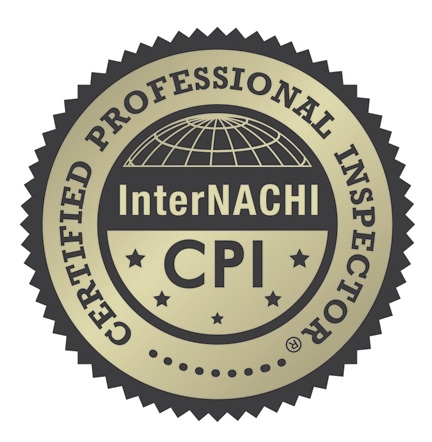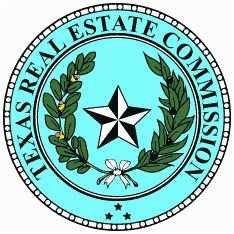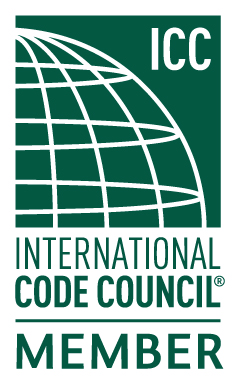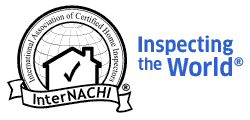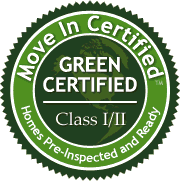4. Blogs by your San Antonio Home Inspector
Carbon Monoxide in your San Antono area Home
Submitted by JoeKeresztury on Sun, 10/27/2013 - 04:03.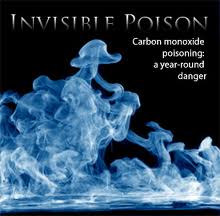
Carbon Monoxide Poisoning Can Kill
Each year thousands of people die from carbon monoxide, many accidently while others deliberately inhale it. Carbon monoxide (CO) has caused more accidental deaths than any other poison in history – not only because it is deadly, but also because it slips under the radar of our human senses. You cannot see it, smell it or taste it, and it usually doesn’t irritate the skin or mucous membranes. 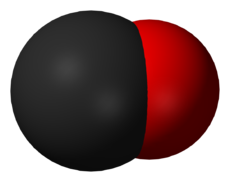 Carbon Monoxide (CO) is an odorless, colorless and tasteless poisonous gas that is slightly less dense than air. Carbon Monoxide is a toxic gas. It is toxic to humans and also animals when encountered in high concentrations.
Carbon Monoxide (CO) is an odorless, colorless and tasteless poisonous gas that is slightly less dense than air. Carbon Monoxide is a toxic gas. It is toxic to humans and also animals when encountered in high concentrations.
Sources of carbon monoxide, according to the U.S. Environmental Protection Agency, include:
 Carbon monoxide (CO) is produced as a result of the incomplete combustion of any carbon based fuel (petroleum, gas, paraffin, oil, coal, wood, charcoal, etc). When carbon-based fuel burns efficiently (i.e. there is plenty of oxygen), then each carbon (C) atom in the fuel bonds with two oxygen (O) atoms from the air to form carbon dioxide (CO2), the same gas we normally exhale. But when there isn’t enough oxygen available for the fuel to burn completely, then each carbon atom bonds with just one oxygen atom to form carbon monoxide (CO).
Carbon monoxide (CO) is produced as a result of the incomplete combustion of any carbon based fuel (petroleum, gas, paraffin, oil, coal, wood, charcoal, etc). When carbon-based fuel burns efficiently (i.e. there is plenty of oxygen), then each carbon (C) atom in the fuel bonds with two oxygen (O) atoms from the air to form carbon dioxide (CO2), the same gas we normally exhale. But when there isn’t enough oxygen available for the fuel to burn completely, then each carbon atom bonds with just one oxygen atom to form carbon monoxide (CO).
Dangerous situations occur when carbon monoxide is trapped in contained spaces that are poorly ventilated. Faulty appliances used in enclosed (or even semi-enclosed) spaces, for example a charcoal braai grill burning in the kitchen or a car engine running in a closed garage, can cause CO to build up to fatal levels. If there is too much carbon monoxide in the air you are breathing, your ability to absorb oxygen can be diminished, resulting in serious tissue damage. More than 400 Americans die every year from unintentional carbon monoxide poisoning, according to the Centers for Disease Control and Prevention, and it is responsible for more than 20,000 people visiting the emergency room annually. Low levels of CO poisoning are often mistaken for those of other common ailments, like the flu, and may include: headache, fatigue, dizziness, nausea, weakness and shortness of breath. You can strongly suspect CO poisoning if these symptoms improve when you get fresh air and/or go outside. With higher levels of CO poisoning, symptoms become more severe, and include worsening headaches, vomiting, fainting, confusion and impaired vision and hearing. Carbon monoxide poisoning can be avoided by making sure you know how to use fuel burning appliances correctly, have sufficient ventilation, take specific safety precautions and get fuel burning appliances professionally inspected once a year. Modern Standards call for Carbon Monoxide detectors outside all bedroom areas. That is based on the International Residential Code- IRC {R315}. In new home construction many builders are using a combo smoke and carbon monoxide detector outside bedroom areas to meet the requirement of having both.
 At excessively high levels of Carbin Monoxide (CO) it can cause loss of consciousness, possibly causing coma and even eventually death. Symptoms can occur very quickly, within minutes of exposure to the poisonous gas, and someone can succumb to its effects before they’re able to get to needed safety and fresh air. People who are sleeping and/or intoxicated can die from CO poisoning even more easily than usual. Unborn babies, infants, and also people with anemia or those that have a history of heart and/or respiratory disease are very susceptible to the effects of CO exposure. Breathing low levels of the gas can cause increased chest pain and fatigue in people with chronic heart disease. Even some healthy people who survive breathing high levels of CO can be left with permanent heart problems or even brain damage. If you think you’re experiencing carbon monoxide poisoning get fresh air immediately. Turn off any fuel-burning appliances, and get outside as soon as possible. Call emergency medical services if you or anyone else shows signs of losing consciousness, or any other serious symptoms or if symptoms do not quickly improve. Even if you or any others start feeling better, call emergency service right away and tell them that you are concerned about possible Carbon Monoxide poisoning.
At excessively high levels of Carbin Monoxide (CO) it can cause loss of consciousness, possibly causing coma and even eventually death. Symptoms can occur very quickly, within minutes of exposure to the poisonous gas, and someone can succumb to its effects before they’re able to get to needed safety and fresh air. People who are sleeping and/or intoxicated can die from CO poisoning even more easily than usual. Unborn babies, infants, and also people with anemia or those that have a history of heart and/or respiratory disease are very susceptible to the effects of CO exposure. Breathing low levels of the gas can cause increased chest pain and fatigue in people with chronic heart disease. Even some healthy people who survive breathing high levels of CO can be left with permanent heart problems or even brain damage. If you think you’re experiencing carbon monoxide poisoning get fresh air immediately. Turn off any fuel-burning appliances, and get outside as soon as possible. Call emergency medical services if you or anyone else shows signs of losing consciousness, or any other serious symptoms or if symptoms do not quickly improve. Even if you or any others start feeling better, call emergency service right away and tell them that you are concerned about possible Carbon Monoxide poisoning.
If you and/or any family members have been suffering from continuing chronic flu like symptoms that may not seem to be too serious then you may want to ask your doctor if it could be due to some level of Carbon Monoxide poisoning. You should at that point also have any and all fuel burning appliances in your home professionally inspected by qualified technicians for any possible problems that may be causing Carbon Monoxide issues that could be contributing to you and any family members health issues.  Sample image shows a combo carbon monoxide and smoke detector. Next image shows required areas for smoke and carbon monoxide detectors.
Sample image shows a combo carbon monoxide and smoke detector. Next image shows required areas for smoke and carbon monoxide detectors. 
For smoke detector info visit:
http://www.jwkhomeinspections.com/blog-smoke-detector-alarm-san-antonio-home-inspector.html
Carbon Monoxide Tips:
• Install CO alarms with battery backup in the home outside each sleeping area. Make sure furnishings and/or draperies do not cover the CO alarms. An alarm is not a substitute for making sure that appliances that can produce carbon monoxide are in good repair and safe. 
• Travel carbon monoxide alarms are available for use when you are elsewhere from home.
• Check to see that your appliances are installed and comply with building codes and manufacturer's instructions. Qualified professionals should properly install appliances.
• Get your heating system professionally inspected and serviced every year, as well as fireplaces, chimneys and flues.
• In an attached garage, even if the overhead garage door is open, do not leave a car running.
• In your garage make sure to have an auto door closer mechanism 
on the door from garage to the living area of house. Make sure that door is solid core
and weathertite sealed (air tight). 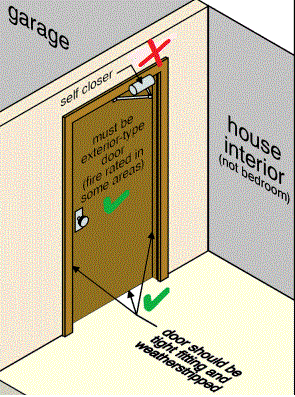
• In the garage make sure there are fresh air vents at an exterior wall.

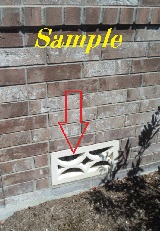
Minimum 2 – 8x16” vents for a 2 car garage and 3 vents for a 3 car garage.
• Do not operate unvented fuel-burning appliances in a room where people are sleeping
• Do not use charcoal inside your house or your garage, vehicle or tent.
• Do not operate a portable generator or any other gasoline engine powered tools or equipment in or near any house, garage or other enclosed space even if doors and windows are open. Use portable generators outside only, far away from the home. Keep the generator away from openings to the home, including doors, windows and vents.
Garage safety info:
Carbon monoxide poisoning news articles:
1891188http://www.cbc.ca/news/canada/toronto/carbon-monoxide-poisoning-deaths-leave-family-devastated-1.2575338
.
In conclusion, follow the guidelines outlined in this article to protect your family from carbon monoxide poisoning in your San Antonio area home.
.
By Joseph W. Keresztury
San Antonio area Home Inspector, Consultant, New Home Construction Specialist
Precautions to prevent carbon monoxide poisoning include but is not limited to :
